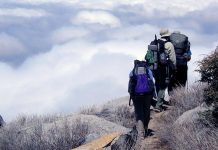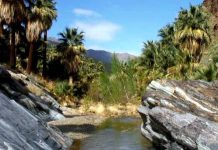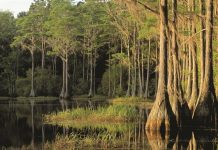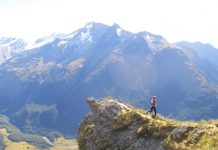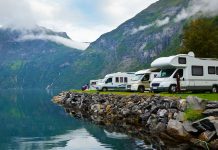There are many excellent locations to hike in the Canadian province of Ontario with the trails at Hockley Valley Provincial Nature Reserve being among the best of them. The forested area is quite tranquil and enables you to discover and explore the beautiful Nottawasaga River watershed.
The reserve is 378-hectares in size and its rolling terrain sits inside of the Niagara Escarpment, but more specifically in Hockley Hills, which is about five miles north of the charming town of Orangeville. Hockley Valley, like its neighbor, the Mono Cliffs Provincial Park, belongs to the Niagara Parks System. UNESCO has designated it as a Niagara Escarpment Biosphere Reserve.
(photo by the_girl)
The first thing you’ll notice when entering the nature reserve is the gorgeous tributary valley which is filled with lowlands forest and several rippling streams that are trying to flow their way into the nearby Nottawasaga River. There are several hiking trails that take you through meadows and woods and over and across several dales and hills.
The region around Hockley Valley has been sculpted out by ancient glaciers and the water erosion that was created when they melted. The hilly profile of the reserve has resulted from sand and gravel deposition that was also caused by the retreating and melting glacial ice.
Ontario Parks has classified the park as a nature reserve since it represents Ontario’s distinctive landforms and unique ecology. In addition, the tributaries in the bottomland forest are an essential water source to the local region. You’ll also come across some pretty rare plants when enjoying the cool forest, rolling terrain, and streams of the reserve.
These include the Cardamine bulbosa (Cuckoo Flower), the Viola adunca (Hooked Violet), and the endangered Juglans cinerea (Butternut Tree). Some rare animals can also be found in the reserve such as the Northern-Long-Eared Bat, Jefferson Salamander, and Northern Brook Lamprey. These are all pretty rare in most of the province.
When it comes to hiking, there are close to 10 miles of well-maintained trails inside of the reserve. Some of the famous Bruce Trail also runs through the park as well as quite a few side trails that branch off of it and form loops. Some of the best of the side trails include Glen Cross, Snell Loop, and Tom East. None of them are really hard to navigate, but you will find that you have to do a bit of hill-climbing and descending on most of them.
Overall, you need to be in pretty decent shape to negotiate the trails in the Hockley Valley Reserve. Crossing over streams and other water areas isn’t any problem at all as there are some excellent bridges in the reserve. However, some of the low-lying areas are prone to flooding when the winter snow melts and the spring arrives. This can make hiking a little trickier, but if the region does flood, it’s usually quite minimal.
Hiking through the reserve during any season of the year is an enjoyable experience and you can find a detailed map of Hockley Valley and its hiking trails on the internet. It’s also a pretty easy place to get to if you’re driving as it’s relatively close to Toronto, which is Ontario’s and Canada’s largest city. It’s just north-west of Toronto and the trip is mainly highway driving.
The parking in the reserve area is free of charge, but there aren’t any visitor facilities on hand. It’s basically a pure wilderness area and an excellent one at that.

